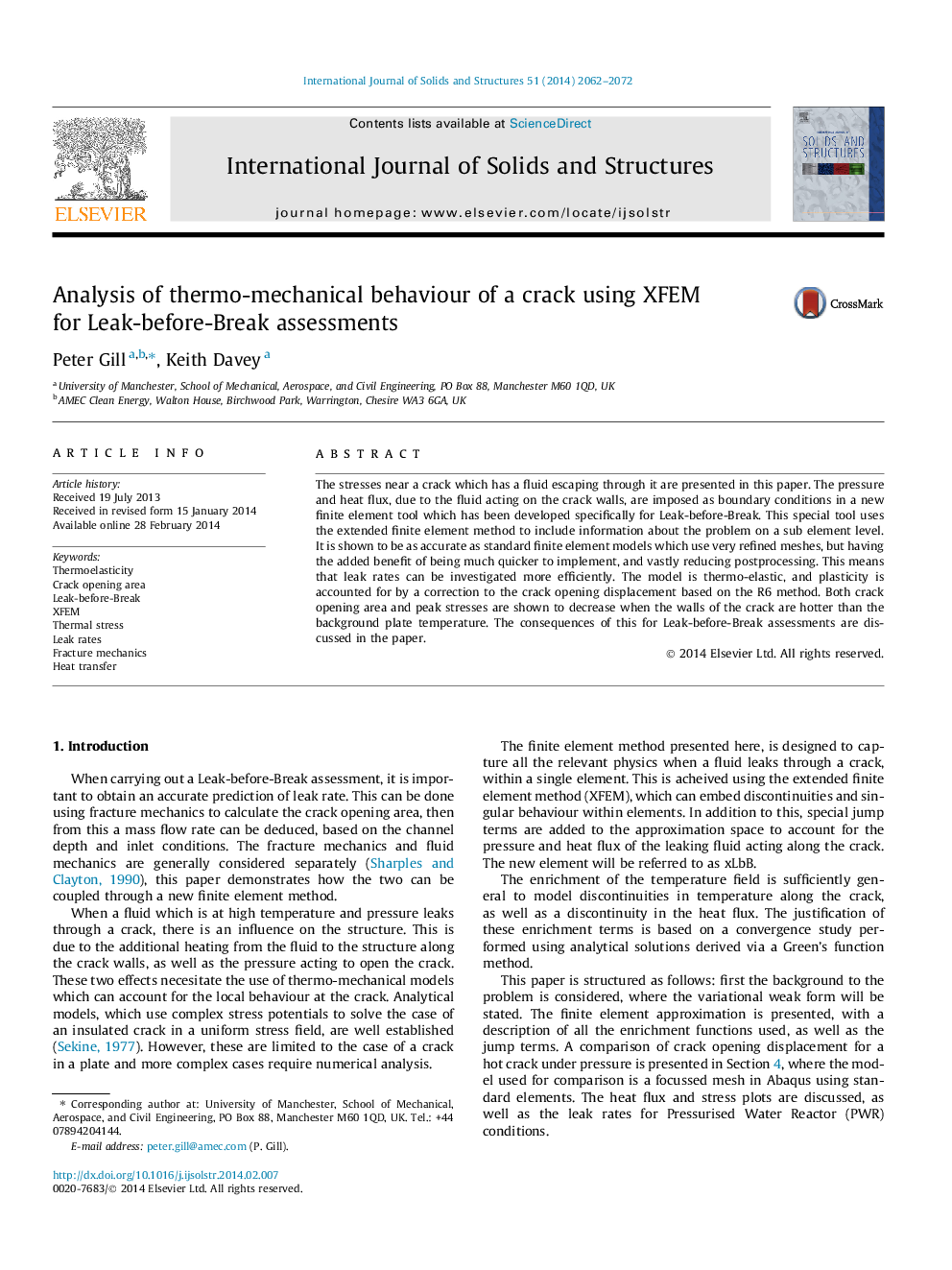| Article ID | Journal | Published Year | Pages | File Type |
|---|---|---|---|---|
| 6749088 | International Journal of Solids and Structures | 2014 | 11 Pages |
Abstract
The stresses near a crack which has a fluid escaping through it are presented in this paper. The pressure and heat flux, due to the fluid acting on the crack walls, are imposed as boundary conditions in a new finite element tool which has been developed specifically for Leak-before-Break. This special tool uses the extended finite element method to include information about the problem on a sub element level. It is shown to be as accurate as standard finite element models which use very refined meshes, but having the added benefit of being much quicker to implement, and vastly reducing postprocessing. This means that leak rates can be investigated more efficiently. The model is thermo-elastic, and plasticity is accounted for by a correction to the crack opening displacement based on the R6 method. Both crack opening area and peak stresses are shown to decrease when the walls of the crack are hotter than the background plate temperature. The consequences of this for Leak-before-Break assessments are discussed in the paper.
Keywords
Related Topics
Physical Sciences and Engineering
Engineering
Civil and Structural Engineering
Authors
Peter Gill, Keith Davey,
